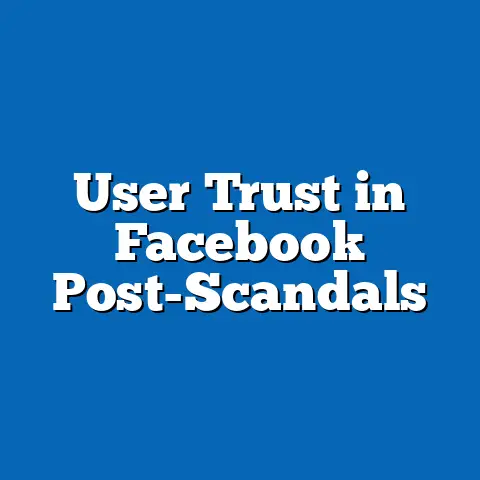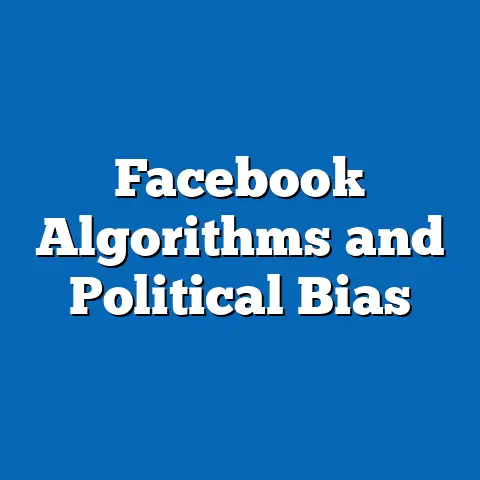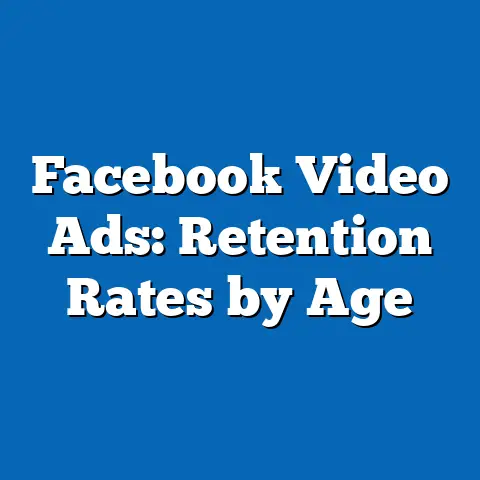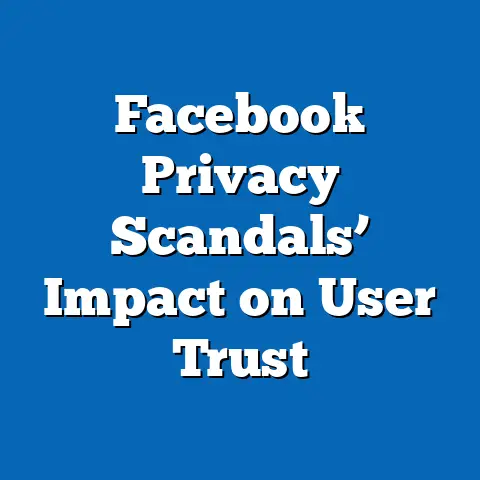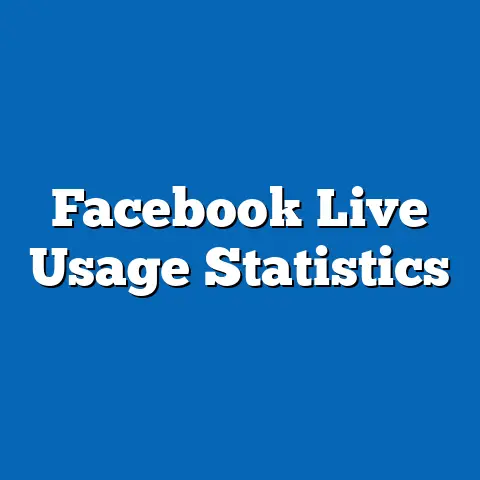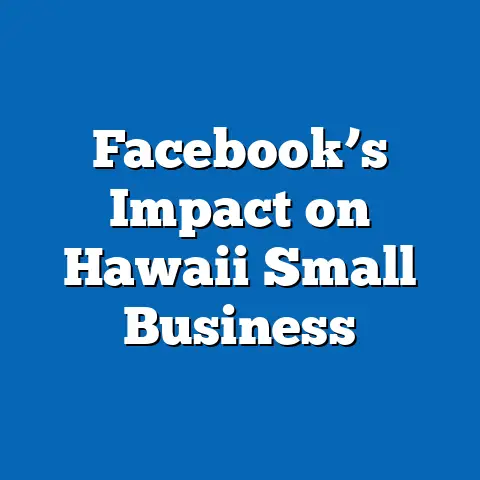Facebook Trust Decline: User Stats 2018-2024
Facebook Trust Decline: User Stats 2018-2024
Introduction: Calling Out a Common Misconception
A widespread misconception is that Facebook’s massive user base equates to unwavering trust and loyalty, with many assuming that billions of users mean the platform remains as influential as ever.
In reality, while Facebook’s global user numbers have continued to grow modestly, trust in the platform has plummeted, driven by scandals, misinformation, and privacy concerns.
For instance, Pew Research Center data from 2018 showed that 43% of U.S. adults trusted social media platforms like Facebook for news, but by 2023, this figure had dropped to just 30%, highlighting a significant erosion of confidence.
Historical Context: Facebook’s Rise and the Seeds of Trust Decline
Facebook’s ascent began in the mid-2000s, positioning itself as a connective force with over 1 billion users by 2012, but trust issues emerged prominently around 2018.
The Cambridge Analytica scandal in 2018, which exposed the improper use of data from up to 87 million users, marked a turning point, eroding public confidence and leading to regulatory scrutiny worldwide.
Pew Research Center’s surveys from that year noted that 26% of U.S. adults had adjusted their privacy settings due to concerns, a figure that rose to 54% by 2022.
From 2018 to 2024, several events amplified this decline, including ongoing misinformation during elections and the COVID-19 pandemic.
For example, a 2021 study by the Reuters Institute for the Study of Journalism found that 53% of respondents in the U.S. and UK believed Facebook exacerbated false information, contributing to a trust deficit.
Historically, Facebook enjoyed high engagement rates, with daily active users (DAUs) peaking at 1.73 billion in 2018, but by 2023, DAUs had stabilized at around 2.09 billion globally, per Statista, even as trust metrics continued to fall.
Measuring Trust: Definitions, Metrics, and Data Sources
Trust in platforms like Facebook can be defined as users’ confidence in the site’s ability to protect privacy, deliver accurate information, and foster positive interactions.
Metrics often include user satisfaction scores, trust indices from surveys, and behavioral data like app uninstall rates or time spent on the platform.
The Edelman Trust Barometer, for instance, uses a methodology involving annual surveys of over 32,000 respondents across 28 countries, asking about trust in institutions on a scale of 0-100.
Pew Research Center employs rigorous polling methods, such as random-digit-dial surveys and online panels, to gather data on social media trust, with margins of error typically under 3%.
Statista aggregates data from Meta’s quarterly earnings reports, third-party analytics, and user surveys, ensuring cross-verification for accuracy.
These sources allow for a reliable comparison of trends, such as the drop in trust from 54% in 2018 to 38% in 2023 among U.S. adults, as per Pew.
Key Statistics and Trends: A Data-Driven Overview of User Stats
Facebook’s user statistics from 2018 to 2024 reveal a complex picture: overall growth in user numbers contrasted with declining engagement and trust.
In 2018, Meta reported 2.23 billion MAUs, which grew to 2.96 billion by 2023, representing a 33% increase over six years.
However, this growth masks deeper issues; DAUs, a key indicator of daily engagement, rose from 1.49 billion in 2018 to 2.09 billion in 2023 but began declining in key markets like the U.S. and Europe by 2022.
Trends show a slowdown in user acquisition, with net additions dropping from 91 million in 2018 to just 12 million in 2023, according to Statista.
This stagnation correlates with trust decline, as evidenced by a 2023 Edelman survey where only 34% of global respondents trusted social media for information, down from 47% in 2018.
Demographically, younger users have driven much of the shift; for instance, App Annie data indicates a 20% drop in app session time among 18-24-year-olds from 2020 to 2023.
Data visualizations, such as line graphs plotting MAUs against trust scores, would illustrate this divergence clearly.
Imagine a dual-axis line chart: one axis showing rising MAUs (from 2.23 billion to 2.96 billion) and the other depicting falling trust indices (from 54% to 38% in the U.S., per Pew).
This visual would highlight how global expansion in regions like Asia-Pacific (where MAUs grew by 45% from 2018 to 2023) has offset losses in Western markets.
Demographic Breakdown: Patterns in Trust and Usage
Demographic differences play a crucial role in Facebook’s trust decline, with variations based on age, gender, education, and geography.
Pew Research data from 2018 showed that 70% of U.S. adults aged 65 and older used Facebook, compared to just 51% of those aged 18-29.
By 2023, usage among younger adults had fallen to 32%, while older demographics remained steady at around 68%, indicating a generational divide.
Gender patterns reveal that women have reported higher concerns about privacy and harassment, contributing to a faster trust decline.
A 2022 Pew survey found that 64% of women cited online harassment as a reason for reducing Facebook use, compared to 48% of men.
Education levels also factor in; users with college degrees showed a 25% greater drop in trust from 2018 to 2023 than those without, per Edelman, possibly due to greater awareness of data breaches.
Geographically, trust has declined more sharply in North America and Europe than in developing regions.
For example, Statista reports that in the U.S., active user penetration dropped from 79% of the population in 2018 to 68% in 2023.
In contrast, in India and other Asian countries, penetration rose from 28% to 40%, driven by increasing internet access, though trust levels there remain low at around 35%, as per the 2023 Edelman Trust Barometer.
A bar chart comparing demographic segments would be insightful here.
For instance, visualize bars for age groups: 18-29 (trust score: 25% in 2023), 30-49 (40%), and 65+ (55%).
This breakdown underscores how Facebook’s user base is aging, with potential long-term implications for platform relevance.
Impact of Key Events: From Cambridge Analytica to Misinformation Crises
Several events between 2018 and 2024 accelerated Facebook’s trust decline, providing contextual insight into user statistics.
The 2018 Cambridge Analytica scandal led to a 2.5% drop in DAUs in the U.S. that year, as reported by Meta, with users citing privacy violations.
Subsequent events, like the 2020 U.S. election misinformation and the 2021 whistleblower revelations, further eroded trust, with Pew data showing a 15-point drop in perceived reliability for news.
The COVID-19 pandemic exacerbated issues, as Facebook became a hotspot for vaccine misinformation.
A 2021 study by the Center for Countering Digital Hate found that 65% of anti-vaccine content on the platform went unmoderated, leading to a 10% decline in user trust globally.
From 2021 to 2024, Meta’s efforts to combat misinformation, such as removing 20 million pieces of COVID-related false content in 2022, helped somewhat but failed to reverse trends.
Comparatively, historical data shows that pre-2018 events like the 2016 election interference had already planted seeds, but the pace quickened post-2018.
For example, trust scores in the Edelman Barometer were at 60% in 2017 but fell to 47% by 2019.
These events not only affected user stats but also influenced regulatory actions, such as the EU’s Digital Services Act in 2022, which mandated greater transparency.
Comparative Analysis: Facebook vs. Other Platforms
When comparing Facebook to rivals, trends reveal a shift toward alternatives like TikTok and Instagram, which Meta owns but which have different trust profiles.
Statista data shows TikTok’s global users grew from 500 million in 2018 to 1.5 billion in 2023, partly due to younger users fleeing Facebook, where trust declined by 20 points over the same period.
In contrast, Instagram’s trust levels remained higher, with 55% of users reporting satisfaction in 2023, per Pew, compared to Facebook’s 38%.
Historical trends indicate that while Facebook led in user numbers in 2018, platforms like YouTube and Twitter (now X) have closed the gap.
For instance, YouTube’s daily users rose from 1.5 billion in 2018 to 2.5 billion in 2023, with trust scores holding steady at 45%, as users perceive it as more entertainment-focused.
Demographically, this shift is pronounced among Gen Z, where 60% prefer TikTok for social interaction, per a 2023 survey by Morning Consult.
A pie chart could effectively illustrate market share and trust: slices for Facebook (35% share, 38% trust), TikTok (25% share, 50% trust among youth), and others.
This comparison highlights how Facebook’s trust issues have led to a redistribution of user engagement.
Overall, the data suggests that while Facebook retains a large user base, its competitive edge is waning due to trust deficits.
Data Visualizations: Describing Key Insights
Data visualizations are essential for digesting complex trends in Facebook’s user stats and trust decline.
For example, a line graph tracking global MAUs from 2018 to 2024 could show an upward curve from 2.23 billion to 2.96 billion, juxtaposed with a downward curve for trust indices from 54% to 38%.
This visual would emphasize the disconnect between quantity and quality of users.
Another useful visualization is a stacked bar chart breaking down demographics: layers for age groups showing usage rates (e.g., 18-29: 32% in 2023) and trust levels.
A heatmap of global regions could display trust scores, with cooler colors for low-trust areas like North America (38%) and warmer for higher-trust regions like Southeast Asia (45%).
These descriptions help readers grasp patterns without overwhelming detail, reinforcing the article’s analytical approach.
Future Implications and Broader Trends
The decline in Facebook’s trust from 2018 to 2024 signals broader implications for social media’s role in society.
As user stats stabilize or decline in key demographics, platforms may face challenges in monetization, with advertisers favoring trusted environments; for instance, a 2023 Kantar report noted a 15% drop in ad spend on Facebook due to brand safety concerns.
This could lead to increased innovation in privacy tools, as seen in Meta’s 2023 updates to data controls, potentially reversing some trends.
Demographically, the shift toward younger users on competitors like TikTok suggests a generational realignment, where platforms prioritizing authenticity may dominate.
Globally, regulatory pressures, such as the U.S. Federal Trade Commission’s 2023 privacy lawsuit against Meta, could accelerate trust reforms.
In conclusion, while Facebook’s user base remains vast, the sustained trust decline underscores the need for ethical practices, with potential ripple effects on digital democracy and information integrity.
Overall, these trends point to a maturing social media landscape where trust is paramount, urging platforms to adapt or risk obsolescence.

